
Lyndon LaRouche (1922–2019) and the LaRouche movement have expressed controversial views on a wide variety of topics. The LaRouche movement is made up of activists who follow LaRouche's views.

Hong Kong (1800s–1930s) oversaw the founding of the new crown colony of Hong Kong under the British Empire. After the First Opium War, the territory was ceded by the Qing Empire to the United Kingdom of Great Britain and Ireland through Treaty of Nanjing (1842) and Convention of Peking (1860) in perpetuity. Together with additional land that was leased to the British under the Convention for the Extension of Hong Kong Territory (1898), Hong Kong became one of the first parts of East Asia to undergo industrialisation.
La Cagoule was a French fascist-leaning and anti-communist militant group. It opposed the left-wing Popular Front and used violence to promote its activities in the final years of the Third Republic and into the Vichy Regime. La Cagoule was founded by Eugène Deloncle and bankrolled, among others, by Eugène Schueller, the founder of L'Oréal.

Joseph Alexandre Saint-Yves, Marquis d’Alveydre was a French occultist who adapted the works of Fabre d'Olivet (1767–1825) and, in turn, had his ideas adapted by Gérard Encausse alias Papus. His work on "L'Archéomètre" deeply influenced the young René Guénon. He developed the term Synarchy—the association of everyone with everyone else—into a political philosophy, and his ideas about this type of government proved influential in politics and the occult.
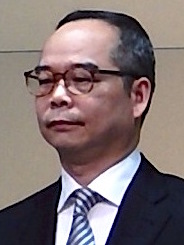
Ray Lau Kong-wah, JP, is a former Hong Kong Government official and former member of both the Legislative Council and the Executive Council. Until 2020, he was Secretary for Home Affairs.
The Groupe X-Crise was a French technocratic movement created in 1931 as a consequence of the 1929 Wall Street stock market crash and the Great Depression. Formed by former students of the École Polytechnique, it advocated planisme, or economic planning, as opposed to the then dominant ideology of classical liberalism which they held to have failed. Their ideas would not be put into practice until the Vichy era, when many technocrats seized the opportunity to reconstruct France, and the disputed document Pacte Synarchique apparently named this group as the plotters to install the Vichy regime. However, many members of the group joined the Resistance and opposed the Vichy regime, ultimately participating in the post-war administration.

Salvador Abascal Infante was a Mexican politician and leading exponent of Mexican synarchism. For a time, he was the leader of the National Synarchist Union (UNS). Abascal represented the orthodox Catholic tendency within the movement.

The National Synarchist Union was a Mexican political organization. It was historically a movement of the Roman Catholic extreme right, similar to clerical fascism and Falangism, implacably opposed to the policies of the Institutional Revolutionary Party (PRI) and its predecessors that governed Mexico from 1929 to 2000 and from 2012 to 2018. The organization was notably the only explicit right-wing movement in Mexico to garner such nation-wide support and influence during this era. At its peak in 1940, there were approximately 500,000 registered members. Mostly active in the late 1930s and early 1940s, its support for the Axis in World War II damaged its reputation. The organization experienced intense infighting in the mid-1940s which ultimately led to multiple schisms. The organization was dissolved as a political party in 1951 and largely faded into obscurity outside the city of Guanajuato, where it retained some local influence. In the 1980s, the UNS was reconstituted as the Mexican Democratic Party, which held seats in the Chamber of Deputies from 1979 to 1988, peaking at 12 Deputies in the 1982 election but losing its presence in 1988; the Mexican Democratic Party (PDM) dissolved in 1997, though two groups both claiming to be the legitimate UNS continued to exist.

Jean-Yves Le Drian is a French politician who served as Minister of Europe and Foreign Affairs in the governments of Prime Ministers Édouard Philippe and Jean Castex (2017–2022) and as Minister of Defence under President François Hollande (2012–2017). A former member of the Socialist Party, he had been an Independent from 2018 before founding Territories of Progress in 2020.
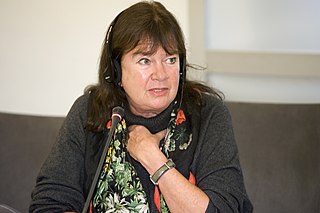
Helga Zepp-LaRouche is a German political activist. She is the widow of American political activist Lyndon LaRouche, and the founder of the LaRouche movement's Schiller Institute, as well as the German Bürgerrechtsbewegung Solidarität party (BüSo).

The LaRouche movement is a political and cultural network promoting the late Lyndon LaRouche and his ideas. It has included many organizations and companies around the world, which campaign, gather information and publish books and periodicals. LaRouche-aligned organizations include the National Caucus of Labor Committees, the Schiller Institute, the Worldwide LaRouche Youth Movement and, formerly, the U.S. Labor Party. The LaRouche movement has been called "cult-like" by The New York Times.
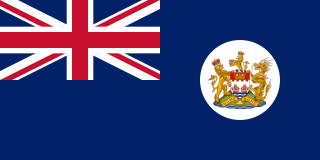
From 1841 to 1997, except for a brief period of Japanese occupation during World War II between 1941 and 1945, Hong Kong was a British crown colony and, from 1981 until its handover, a dependent territory of the United Kingdom. The colonial period began with the British occupation of Hong Kong Island under the Convention of Chuenpi in 1841 of the Victorian era and ended with the handover of Hong Kong in July 1997.

Manuel Torres Bueno was a Mexican politician, lawyer, and jefe (leader) of the National Synarchist Union. Bueno would lead the organization during the height of its membership and activity. His tenure as leader of the National Synarchist Union was a period of ideological instability which would ultimately lead to the fracture of the organization.
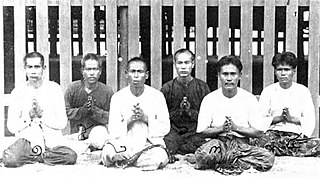
A triad is a Chinese transnational organized crime syndicate based in Greater China with outposts in various countries having significant overseas Chinese populations.
Liberalism in Hong Kong has become the driving force of the democratic movement since the 1980s which is mainly represented by the pro-democracy camp which strives for the universal suffrage, human rights and rule of law in Hong Kong. It is one of two major political ideologies of the Hong Kong, with the other being conservatism. The emergence of the contemporary liberalism took root in the rapid democratisation in the final years of the colonial years in the 1980s and 1990s, which the pro-democracy camp was united under the banner of an autonomous Hong Kong under Chinese sovereignty. The liberals consolidated their popular support from the 1989 Tiananmen Square protests and massacre and received landslide victories in the first direct elections in 1991 and 1995 in the final colonial years. The liberals took the defensive role against the Beijing's authoritarian regime going into the early SAR period which led to the massive demonstration against the Basic Law Article 23 in 2003.
Conservatism in Hong Kong has become the backbone of today's pro-Beijing camp, which has been the major supporting force of the SAR administration led by the indirectly elected Chief Executive. It is one of two major political ideologies of the Hong Kong, with the other being liberalism. Since the Sino-British Joint Declaration of 1984, conservatism has been characterised by business elites joining with pro-Communist traditional leftists in a "united front" to resist the rise of the demand for democratisation and liberalisation, in order to secure continued political stability and economic prosperity while maintaining a good relationship with the communist central government in Beijing leading up to and after the 1997 handover.

Jacques Louis Eugène Rouché was a French art and music patron. He was the owner of the journal La Grande Revue and manager of the Théâtre des Arts and the Paris Opera.
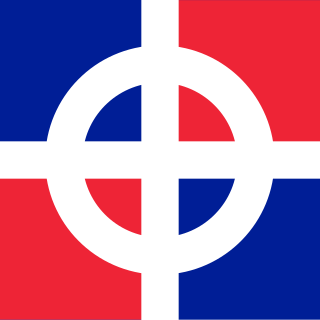
L'Œuvre Française, also called L'Œuvre, was a French nationalist, néo-Pétainist and antisemitic far-right movement founded in 1968 by Pierre Sidos. Inspired by the "semi-fascist" regimes of Vichy France, Francoist Spain and the Estado Novo, L'Œuvre Française was—until its dissolution by the authorities in 2013—the oldest nationalist association still active in France.
José Antonio Urquiza Septién was a Mexican integrist, wealthy landowner, and a key figure in developing Mexican synarchism. Along with many other radical Catholics, Urquiza co-founded the far-right National Synarchist Union (UNS). He had given a considerable amount of his fortune to the organization and heavily financed the group's early activities and growth.

The Pacte Synarchique is a historical theory that the surrender of Vichy France was as a result of a conspiracy by French industrial and banking interests to surrender France to Hitler in order to fight Communism.















